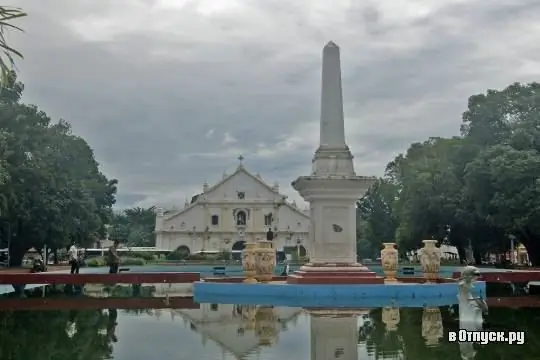
Description of the attraction
The city of Wigan is located on the western coast of the Philippine island of Luzon. It is the capital of the island province of Ilocos Sur. The population is just over 9 thousand people. The 6th President of the Philippines Elpidio Quirino was born here.
The city is included in the list of UNESCO World Heritage Sites thanks to the numerous buildings that have survived from the time of the Spanish colony. Vigan is famous for its cobbled streets and unique architecture that combines elements of traditional Filipino and colonial European styles.
Once upon a time on the territory of present-day Wigan there was a settlement of merchants who arrived in the Philippines from the Chinese province of Fujian. They called this place "Bi Gan" which meant "beautiful coast". This is where the modern name of the city comes from. Until now, many families live here, in which Chinese and Spanish roots are mixed.
At the time of the Spanish colony, the city was officially called Villa Fernandina in honor of Prince Ferdinand, the firstborn of the Spanish king Philip II, who died at the age of 4. Wigan is considered a unique Philippine city as it is one of the few cities that has preserved its historical heritage dating back to the 16th century.
Among the most impressive buildings in Vigan is the Cathedral of St. Paul, where the great Ilokan poet Leona Florentino is buried. A copy of the statuette of Santo Cristo Malagroso is also kept here. Next to the cathedral is the Residence of the Archbishop - the only active residence built during the time of the Spanish colony. In front of the cathedral is the Plaza Salcedo, named after the Spanish conquistador Juan de Salcedo. And right behind the cathedral is the Plaza Burgos, dedicated to the memory of the Filipino great martyr Jose Burgos. On the west side of the square is one of the most popular tourist spots in Vigan - the Vigan Empanadaan cafe, where you can taste the famous "empanadas" - Spanish pancakes with meat, and "Sinanglao" - a traditional roast of beef entrails.
In the Pagburnayan area, you can see how the famous Vigan burnay jars are made. To get acquainted with nature, you should go to the Baluarte mini-zoo, where you can see tigers, or to the Secret Garden - a wonderful park with a small cafe hidden among thickets of trees.
Finally, you should definitely walk along the most famous street in the city of Mena Crisologo Street - it was this street that brought Wigan world fame, thanks to its paved surfaces and houses built in the 16th and 17th centuries. Tourists can buy souvenirs here or take a ride in the "kaleza" - a two-seater horse carriage with a convertible top.






